Tourism
The Area for Religious Practices
Danjo Garan, the place where Koyasan was founded.
It is a sacred place for Shingon Buddhism, embodying Kobo Daishi's ideas and ideals.
There are many temples and towers at the Danjo Garan, which is the sacred place of Koyasan. At the time of its establishment, the main hall, which was called Kondo, had long played an important role at Koyasan. The current building has been rebuilt for the seventh time. The principle buddha is Yakushi Nyorai (Bhaisajyaguru) created by Takamura Koun. The large pagoda was built as the root dojo of Shingon Buddhism. A three-dimensional mandala is formed by arranging Taizo Dainichi Nyorai in the center of the inner court, four buddhas of Vajradhatu on all sides, and sixteen bodhisattvas by Domoto Insho on all 16 pillars. Goeido is a Jibutsudo (a room where a private Buddha is kept) for Kobo Daishi. Fudoin is designated as a national treasure. It is a Buddhist temple built by Gyoshojonin in alcove style during the Kamakura period.
Access / Approx. 10 mins. walk from Fumoin
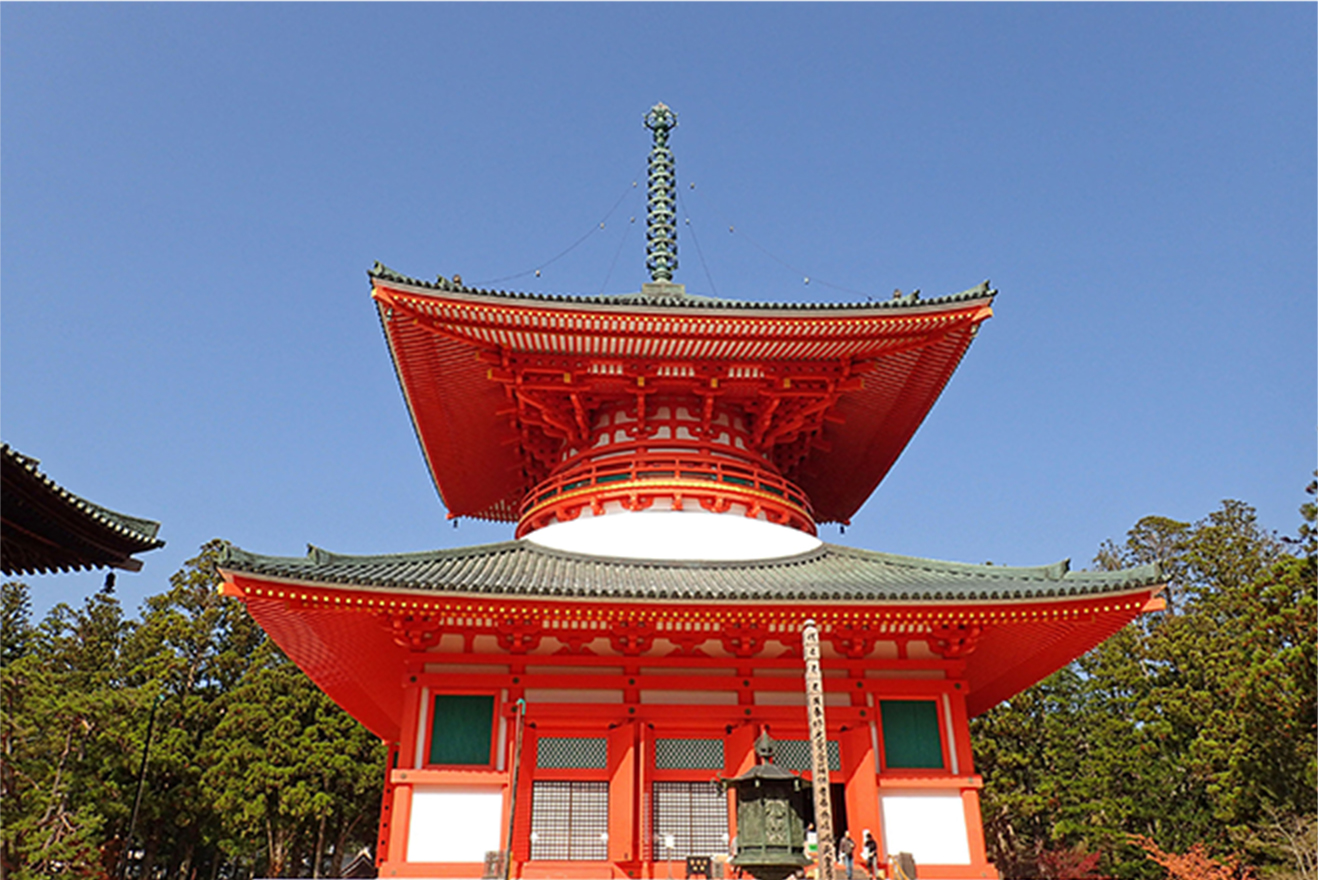


Tourist Attraction

Nyonindo
Until 1872 (Meiji era year 5), women were banned in Koyasan. Nyonindo was a Sanrojo (where priests pray) for women at that time. After the ban was lifted, the largest Nyonindo was preserved. In front of it, "Otake Jizo", which was built to mourn those who died in the Great Edo Earthquake during the Ansei era, is worshipped.
Access / Approx. 10 mins. walk from Fumoin
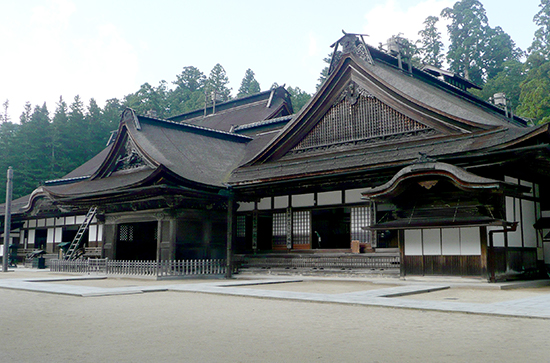
Kongobuji
Kongobuji was originally the name referred to as the entire Koyasan, but with the guidance of the Meiji's changing of the era, it became a unique name for Seisanji, the head temple of Koyasan. After that, it merged with the neighboring Kozan-ji Temple which led to today. This is the temple of the late mother of Toyotomi Hideyoshi, and is also famous for Toyotomi Hideyoshi's nephew, Hidetsugu, fell on his sword (ordered to commit suicide).
Access / Approx. 3 mins. walk from Fumoin

Rihokan Museum
This museum was established for the purpose of publicly showcasing various national treasures including important cultural properties of Koyasan and Kongobuji. The building resembles Uji Byodoin Temple and is one of the few Taisho buildings within the grounds of a temple.
Access / Approx. 10 mins. walk from Fumoin
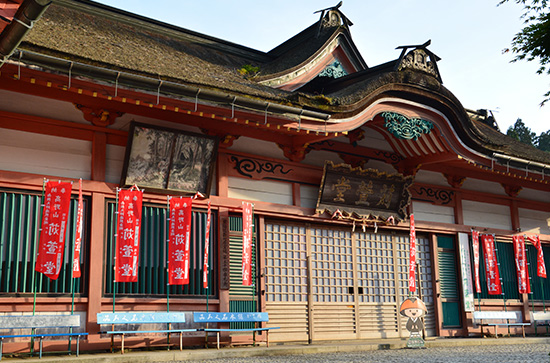
Karukayado
This is the place where Karukaya Doshin became a priest and accepted his own son, Ishidomaru, as his disciple. They never revealed they were related and focused on Buddhism as a master and disciple. The story of Karukaya Doshin and Ishidomaru is handed down as a very sad story.
Access / Approx. 10 mins. walk from Fumoin
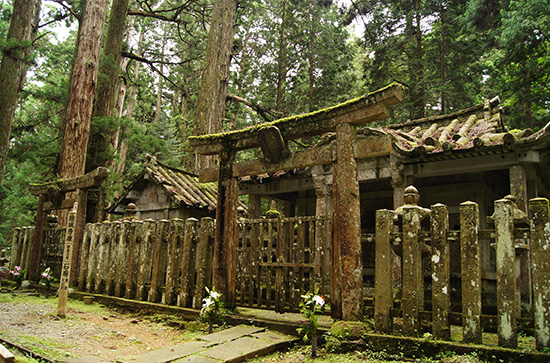
Okunoin (Inner Shrine)
It is about 2 km from Ichinohashi to Kobo Daishi's temple. Over 200,000 tombs are engraved with the names of many historical figures.
Access / Approx. 13 mins. walk from Fumoin to Ichinohashi. To the Okunoin is additional 30 mins. walk.
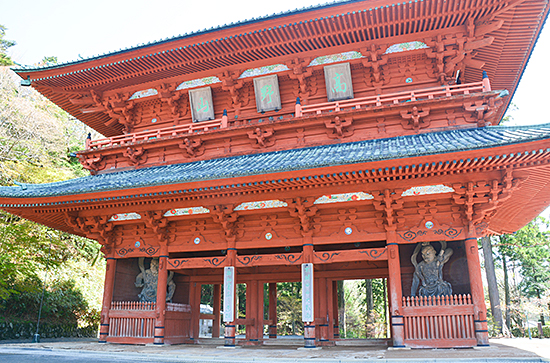
Daimon
At the time of its establishment, the main gate of Koyasan was located in Kuoridani, a lower level ground than its current location. The current gate was rebuilt in Hoei 2 (1705), and the statues of the Kongorikishi, the two wrathful and muscular guardians of the Buddha on both sides, are Yasui (Agyo statue) and Unkei (Ungyo statue).
Access / Approx. 18 mins. walk from Fumoin

Daishi Kyokai
It was built in 1925 to commemorate the 1100 years of Koyasan's initial opening. Every year, a national singing competition and a religious dance competition are held here.
Access / Approx. 7 mins. walk from Fumoin

Kongosanmaitahoto
Hojo Masako built a family temple for her husband, Minamoto No Yoritomo, and it became designated as the national treasure in Meiji era year 33(1900). In addition, Kyodo (sutra library) is designated as an important cultural property in Koyasan's only practice house, and the rhododendron in the shrine is designated as a natural monument.
Access / Approx. 7 mins. walk from Fumoin

Tokugawa Mausoleum
This is a sacred stand built for Tokugawa Iyeyasu and Hidetada, by the third shogun, Iyemitsu, and it consists of two identical single-shaped treasures. It was designated as an Important Cultural Property in Taisho era year 15 (1926).
Access / Approx. 10 mins. walk from Fumoin
